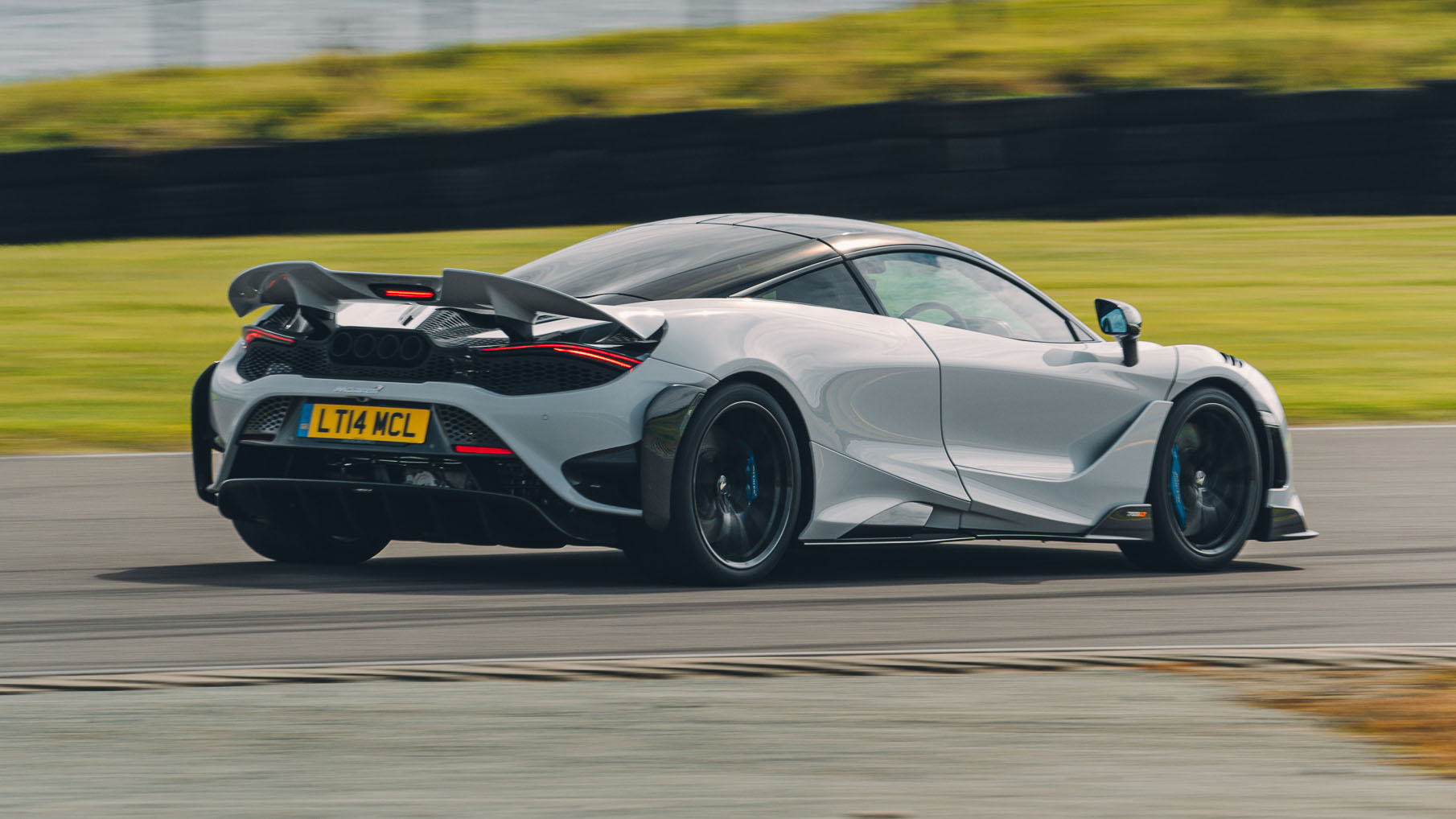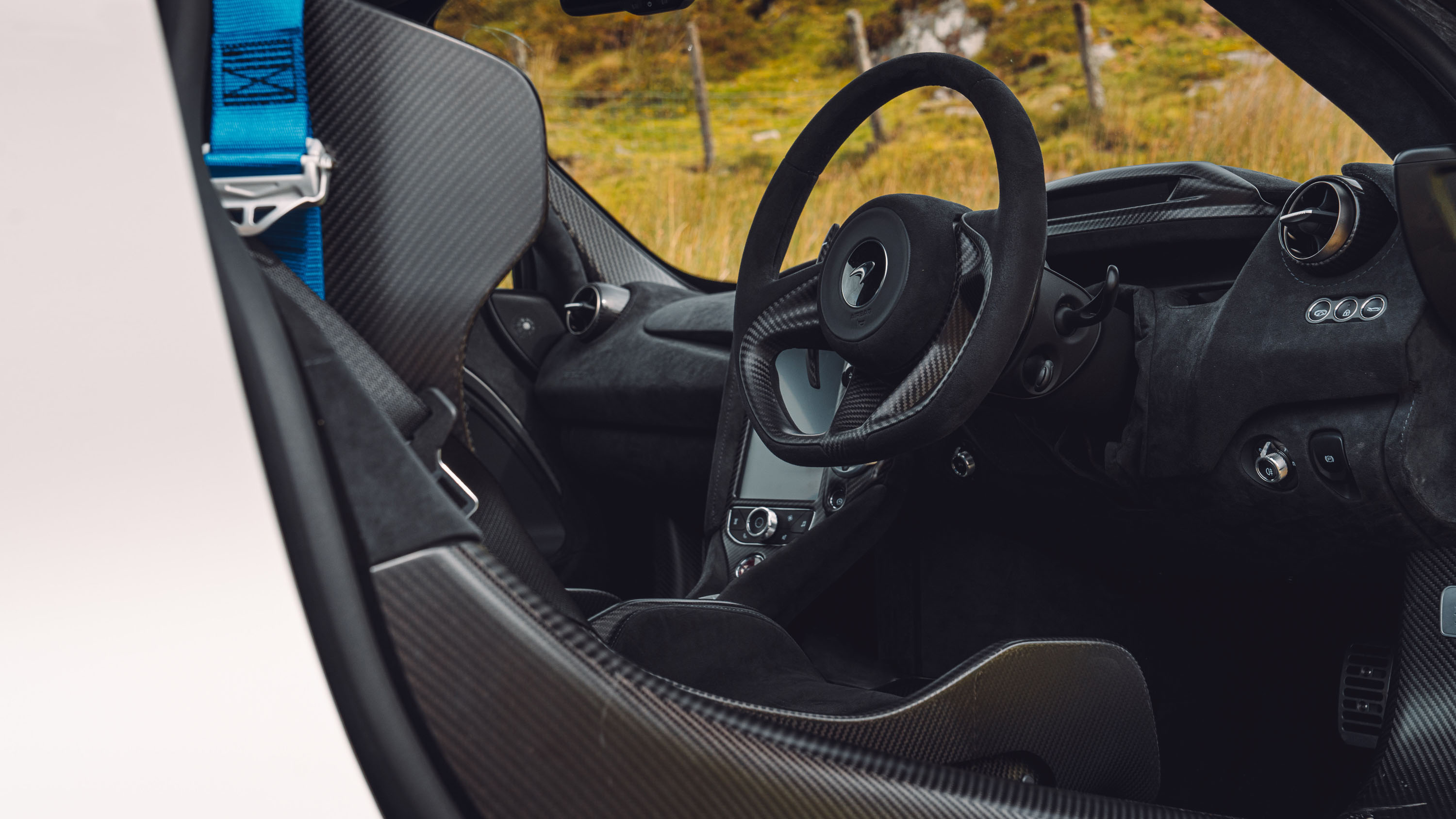
McLaren 765LT review
Driving
What is it like to drive?
Want a one-word summary? Intense. But so was the 675LT. The difference is that the 765LT is more aggressive and demanding. The 675LT fitted itself to you, the 765LT challenges you.
It is fearsomely, intimidatingly fast. The way it fires itself across the second half of the rev range, coloured LEDs lighting up as you hone in on a limiter you wish would cut in now to give you some respite from the relentless shove, is deeply affecting. Keeping your foot hard down is a challenge. It feels every bit as rapid as Ferrari’s 818bhp 296GTB, just lacks the insta-hit of torque.
There’s nothing superfluous about the noise, no sense of energy going to waste, no real sensation of the engine having to overcome weight, just this direct connection to the back axle as you accelerate, so you feel the forces, the tenseness in the drivetrain and compressed rear suspension, the immediacy of the gearchanges. It’s not a show-off, it’s just bloody implacable.
It feels faster than the Senna (and is faster to 186mph and barely any slower to the markers below that), mostly because in that car the huge downforce is there as a traction and dynamic support. Here, the ride is wilder.
Which versions have you driven?
Both: the coupe during summer and on track, the Spider over winter. Coupe first. We drove it at Anglesey racetrack, where if the surface was anything other than bone dry and you were in any gear under fifth, sudden, violent wheelspin was a possibility. Certainly kept you on your toes. But you also had to keep it on the boil as well. Despite McLaren’s claims to have reduced lag and improved response, the 4.0-litre twin turbo V8 doesn’t have bright enough low rev response. There’s lag and inertia below 3,500rpm, after which it wakes up very suddenly.
The Spider we drove more recently was smoother. It felt more sure of itself and friendlier to drive. We spoke to McLaren who confirmed there have been no chassis hardware or software changes since launch. However, the tyres have a major role to play. The winter tyres fitted to the Spider were always in their operating window, and although the limits were lower, there was barely any squidge or vagueness, just enthralling, communicative handling.
You have to be circumspect coming out of medium speed corners, no matter which tyres you’re on. Keep the revs high for response, but ease the throttle on gently – easier said than done when the engine wants to hit so hard. The traction control has to work flat out. It manages very well, allowing a few degrees of slip and operating smoothly most of the time.
Driving the Spider in low temperatures on caked roads brings the realisation that a) you’re never going to experience full acceleration and b) traction control is a wonderful invention and you wouldn’t be here without it. Don’t even go for ESC Dynamic. Leave it all on. The little flurries of half-spin are still there to keep you on your toes.
Are there any differences between coupe and Spider?
Only to make them handle as similarly as possible given the extra 50kg of weight, a centre of gravity that has shifted up and back slightly, and different airflow over the body. The dampers and active aero have both been fractionally recalibrated. As far as we’re concerned the main drawback to the Spider isn’t the way it drives, but the loss of the back deck’s extra stowage space. Cope with that and you might as well have the one that exposes you to the elements occasionally. Feels even more visceral, and there’s not a trace of structural shake.
How are the brakes?
Astonishing. Immense bite and incredible resistance to fade. If you were asking everything of them, they had your back. But go gently with them and the pedal felt inert and more snatchy to use, and even when braking hard the stopping force sometimes felt uneven.
This is a corollary of the suspension rather than the brakes. So stiff is the 765LT if you ramp it all the way up that it chatters and patters on what you thought was a perfectly smooth racetrack. Factor heavy braking into this, loading up the front suspension, and you get kickback and jinking. At Anglesey, it was best to soften the damper settings to try and smooth things out.
Doing that calmed down the steering a little. There’s no doubting the clarity of the signals you get back from the wheels – I can’t think of any other car of this type that has better steering feel and feedback – but rather than writhing gently to let you know what’s going on, sometimes the feedback was hectic. Go max attack and it could be a physical wrestle.
Through medium and fast stuff it was significantly better, more planted and capable, lateral grip never in doubt, a feeling that the tyre, aero and suspension were working together. It turned in, exhibited vice-like grip and came firing out the other side.
What about on road?
Vivid and enthralling. It’s tremendous in many ways, but you’re always aware you’re only scratching the surface of what it’s capable of. But instead of this being frustrating, you realise how much sensation and feel you’re still getting from the car, how exploitable it still is. Even on winter tyres, you have perfect awareness of what the steering is doing, if the rear wheels move so much as an inch out of line, you know about it.
You just need to appreciate that cars like this are so fast that real circumspection is required. Even surfing the mid-range, the speeds the 765LT dials up in no time at all, are dizzying. It’s a forceful car, making forceful noises and if your discipline deserts you, it’s not going to hold back.
How’s the refinement?
The cabin features a lot of bare surfaces and carbon fibre, so noise bounces around. And there’s quite a bit coming from the rear tyres. It’s notably more raucous than the 720S and the ride is hard. Short travel and unsettled at low speed, it’s one of those cars that needs to get up to plane, at which point it all makes sense and it glides along easily. But its happy gait is, well, a bit beyond what you’re allowed to do on UK roads…
Featured

Trending this week
- Car Review
BMW iX3






